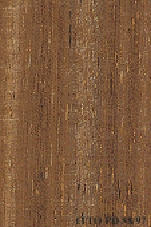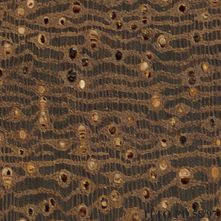
BASRALOCUS (Dicorynia guianensis)
Trade Name
Basralocus
Scientific Name
Dicorynia guianensis Amshoff
Family
LEGUMINOSAE
Common Names
Teck de la guyane; Teck de guyane; Tamoene-kereoe zand locus; Sinngapetou; Singapetou; Sienxa pretoe; Siengdia peto; Siengdia apeto; Kierou; Kiejere-oe; Kieereoe; Dobono-so; Basralokus; Barakaruballi; Angelique blanc; Angelica do para; Angelica; Angelique Batard; Tapaiuna (Brazil); Teck De La Guyanne; Sienga Pretoe; Kabakally; Barakaroeballi; Bois Angelique; Basra Loksi; Bastard Locus; Basralocus; Basra Locus; Angelica Do Pará (Brazil); Angelique Rouge; Angelique Franc; Angelique Gris; Angelique
Scientific Name Synonyms
Dicorynia paraensis Benth.
Description Of The Tree
Botanical Description
It is a dominant tree, it attains heights of 45 m, with a diameter at breast height of 50 to 90 cm, occasionally up to 150 cm. The stem is reported to be cylindrical, 20 to 25 m in length.
Natural Habitat
Dicorynia guianensis is distributed in well drained soils, but is also found in humid lands.
Natural Distribution
It is abundant in Surinam and French Guyana.
Wood Identification
Anatomic Description Of Wood
Wood diffuse porous. Occasionally vessels in radial multiples of 4 or more common. Vessels solitary and in short radial multiples. Tangential diameter of vessel lumina 200 micras or more (large). Occasionally white deposits in heartwood vessels. Vessels per mm Axial parenchyma apparent with the naked eye. Occasionally axial parenchyma aliform. Axial parenchyma confluent. Axial parenchyma in discontinuous tangential lines. Axial parenchyma in thick bands. Axial parenchyma storied. Siliceous bodies in the axial parench 4 to 10 rays per mm (medium). Rays storied. Rays 1 to 4 seriate. Silica bodies in the ray cells. Occasionally heterogeneous rays and/or multiseriate heterogeneous rays. Body ray cells procumbent with mostly 2 to 4 rows of upright and/or square marginal cells ( Fibers with simple to minutely bordered pits.
-
 Wood Macro Photo Radial Plane
Wood Macro Photo Radial Plane
-
 Wood Micro Photo Of Transversal Section
Wood Micro Photo Of Transversal Section
Availability
Cites Status
Unrestricted
General Wood Description
Odor
Odor or taste are typically indistinct.
Color
The sapwood and heartwood are clearly different. The heartwood is reddish brown gray to reddish or yellowish-brown.
COLOR INDEX (1=Black, 7=Light yellow,white)
2
Grain
The grain is commonly straight to interlocked.
Texture
The texture is medium.
Natural Durability
It is moderately durable to durable against fungi. It is rated as resistant against termite, Lyctus and marine borers.
Natural durability index (1= Very high durability, 7=Vey low durability)
4
Silica Content
Silica Content: Silica contents of 0.20% to 1.70%, and as high as 2.92% (of oven-dry weight) have been reported. Silica contents over 0.05% of dry weight are generally believed to affect the machining properties of wood. Silica Value: 2.92
Resistance To Impregnation
This species is reported to be difficult to preserve.
Wood Physical Properties
Basic Density or Specific Gravity (O.D. weight/vol. green) (g/cm³)
0.68
Air-dry Density (Weight and volume at 12%MC) (g/cm³)
0.76
Total shrinkage Tangential (Saturated to 0%MC) (%)
8.9
Total shrinkage Radial (Saturated to 0%MC) (%)
5.4
Drying Defects
Ease of Drying: Air seasoning is recommended to reduce the risk of defects. Drying Defects: Risk of warping, severe checking is also reported. Kiln Schedules: Careful drying recommended.
Recommended Dry Kiln Schedule
US-T2-B2
Dimensional stability ratio (Total Tangential Shrinkage %/Total Radial Shrinkage %)
1.6
Wood Chemical Properties
Wood Mechanical Properties
Bending Strength (MOR),12%MC (kgf/cm²)
1631
Stiffness (MOE) 12%MC (kgf/cm²)
152852
Compression parallel to fiber 12%MC (kgf/cm²)
697
Compression perpendicular to fiber 12%MC (kgf/cm²)
100
Shear strength radial 12%MC (kgf/cm²)
96
Janka hardness (side) 12%MC (kgf)
685
Janka hardness (end grain) 12%MC (kgf)
912
Workability
Sawing
Sawing operations are rather difficult. Power required.
Rotary Veneer Cutting
It is interesting for peeling, thermal treatments are recommended; it could be also sliced.
Sliced Veneer
It is interesting for peeling, thermal treatments are recommended; it could be also sliced.
Blunting Effect
Blunting effect can be severe depending upon silica content. Stellite tipped band saws are recommended.
Machining
Machining characteristics are dependent upon the silica content but the timber is rated as generally easy to work.
Planing
It planes well, with smooth finished surfaces. Carbide tips and a reduced cutting angle of 20 degrees recommended for best results.
Nailing
Nail holding properties are reported to be good but the wood may require to be pre-bored in nailing.
Gluing
The material is reported to have good gluing properties.
Finishing
It gives a good finish.
Polishing
The material is reported to have good polishing properties.
REFERENCED USES
End Uses Summary
EXTERIOR GENERAL, crossties, HOUSING GENERAL, beams, joists, flooring, steps, FURNITURE AND CABINETS, CONTAINERS, cooperage, NAVAL CONSTRUCTION
Exterior General
- 1 - Tabela de resultados de ensaios fisicos e mecanicos
Crossties
- 8 - Maderas latinoamericas. III, Podocarpus standleyi ,Podocarpus oleifolius, Drims granadensis, Magnolia poasana y Didymopanax pittieri
General Housing
- 10 - Silica in Timbers
Beams
- 11 - Prospect: The wood database
Joists
- 12 - Tropical timbers of the world. Part I-Tropical American Species
Flooring
- 14 - Handbook of Hardwoods
Steps
- 17 - Tree Conservation Database
Furniture Cabinets
- 21 - Tropical timbers of the world. Part III-Southeast Asian and Oceanian Species.
Containers
- 50 - Properties of imported tropical woods
Cooperage
- 51 - Recopilacion de propiedades mecanicas de maderas creciendo en Chile
Shipbuilding
- 55 - Tropical Timber Atlas of Latin America
Please Provide Information To View Producer Information